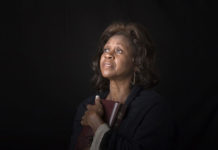THE INDIGENT AND THE INFLUENTIAL
At Mosaic Church in Little Rock, a diverse crowd of 400 people worship together in an 80,000-square-foot abandoned Wal-Mart.
Each week, Pastor Mark DeYmaz sees his vision for a church that reflects its diverse community come alive in a vibrant ministry to both the indigent and the influential in the area.
“In my view, a multicultural church has to be a work of God,” DeYmaz says. “I have watched [U.S. Senator] Mark Pryor sitting next to an alcoholic homeless man taking communion from an immigrant. When you see that, that’s the Church. They are one in that moment because of the power of the Gospel.”
The 3-year-old church has seen its congregation diversify and grow as a result of steady and focused work on the front end. Mosaic replaced the buzz of a new church plant that often results from billboards, direct-mail pieces, and radio- and TV-advertising with a full immersion into the lives of the poor. The congregation purchased a trailer in a run-down park, and leaders went door to door to assess the physical and material needs of the community.
“Then we started meeting those real needs, and the people responded to that,” DeYmaz says.
According to Dr. John Perkins, author of multiple books and co-founder of the Christian Community Development Association (ccda.org), this may be the first step toward justice for people who have been disenfranchised not only by their society but also by the Church.
“The key to restoration is committed Christians and their families living in communities of need, working alongside the community, modeling healthy lifestyles,” he says.
Before launching Mosaic, DeYmaz was in ministry for 21 years, serving mostly affluent white churches. He saw a lot of good intentions toward a more inclusive church, but little proactive work. “It doesn’t happen with good intentions,” he says.
“I guess it breaks my heart when I come across people who are otherwise spiritually mature, but they don’t get it, and all they want to do is give free Christmas presents to the poor people.”
The Southern church also has attracted a significant number of both new believers and Christians who had been disenfranchised from church.
“There are two things visitors say about our church,” DeYmaz says. “Number one is how friendly everyone is, and…Number two, they couldn’t stop crying through the service.”
MULTIETHNIC REFLECTIONS
Probably one of the most talked about and debated issues related to diversity in the Church today is multiethnicity. As the number of foreign-born Americans continues to increase (34.2 million in 2004; up by 2.3% since 2003, according to the U.S. Census), churches are faced with reflecting a community that has ethnically diversified, perhaps two or three times. At Central Baptist Church in Inglewood, California, the neighborhood has changed from white to black to Hispanic, says Pastor Luther Keith.
A couple of years ago in South Barrington, Illinois, the leaders of 17,000-member Willow Creek Community Church (willowcreek.org) recognized that while the Latin population now comprises some 19% of the area around the church, the primarily white Willow Creek congregation has not reflected that change.
“We’re not reaching our own backyard the way we’re called to,” says Mark Ashton, Willow Creek’s pastor of spiritual discovery. And as that backyard continues to diversify, Ashton says, “We’ve got to reinvent.”
So the Chicago-area gigachurch debuted a new Spanish service, Casa de Luz. What began as an extension of a seeker small group for Spanish-speaking people, Ashton says, has grown into a small congregation. This year, Willow Creek plans to hire a full-time minister from Mexico for the group.
Other churches are also finding that a church-within-a-church concept acts as a good first step toward cultivating a multiethnic congregation. This type of outreach falls somewhere in the middle of a multicultural continuum of homogenous groups on one end and thoroughly integrated groups on the other.
At Wayside Baptist Church (waysidemiami.org) in the multiethnic hot spot of Miami, the language of the Sunday service is English; but Wayside also hosts services for Brazilians, Spanish-speaking groups, and Haitians. In all, the 1,000 people who attend the church represent 40 different nations.
Chapel Hill Bible Church in Chapel Hill, North Carolina, has seen a similar evolution. The church began a multicultural outreach by expanding its vision for the local college community— including international students in its focus. As a result, the church within a church has grown from 20 people meeting on the University of North Carolina campus to now 1,700 in its own building.
Today, some 35 different nations are reflected in the congregation, in part due to the ministry of the International Christian Fellowship outreach at the university. Jim Thomas, Chapel Hill Bible’s part-time pastor of cross-cultural mission, hopes that more international and intercultural ministry will happen throughout the Church.
“Being cross-cultural is inherent to being a Christian,” Thomas says. “If you want to know the fullness of life that Jesus offers, you need to escape the gravitational pull of your own culture.”
Chapel Hill Bible (biblechurch.org) also partners with a number of international churches and works with an on-staff African minister to foster diversity. The church offers a new Spanish Bible study on Sundays and other ministries to accommodate the fastest-growing Latino population in the country. And a Chinese outreach meets in the building. Moreover, Chapel Hill teams with an inner-city African-American church in the area—the type of partnership many churches look for when they seek to diversify their congregational outreach.
Thomas says he’s working to “mainstream missions,” adding that one of the difficulties in developing a multicultural church is overcoming the stereotypes about what outreach may be. Recently, he saw a video at a missions conference that portrayed photo after photo of white people teaching and giving to people who were not white.
“That reinforced this notion that the white American Church has the answers and resources we need to be giving to others who are not like us,” Thomas says, adding that the white American Church still has a lot of receiving to do.
“We need people of other ethnicities in our local congregations to challenge our cultural assumptions and identify our blind spots. We also need to learn from their spiritual insights.”











